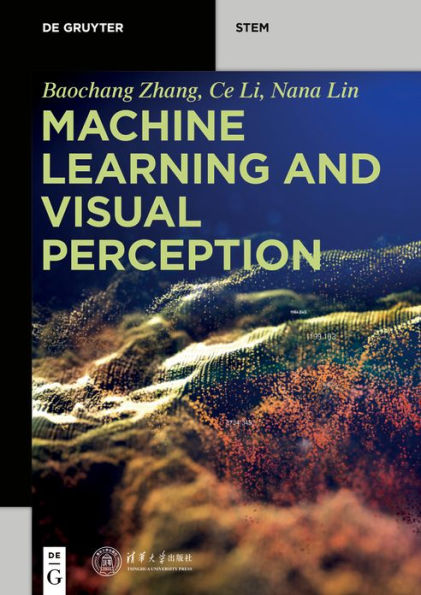Table of Contents
Introduction 1
1 Introduction of machine learning 3
Introduction 3
1.1 Machine learning 3
1.1.1 Basic concepts 3
1.1.2 Definition and significance 4
1.1.3 History of machine learning 5
1.1.4 Machine learning system 6
1.1.5 Basic elements of the machine learning system 6
1.1.6 Category of machine learning 7
1.1.6.1 Classification based on learning strategies 7
1.1.6.2 Classification based on the representation of acquired knowledge 9
1.1.6.3 Classification based on application area 11
1.1.6.4 Comprehensive classification 11
1.1.7 Current research field 13
1.2 Statistical pattern recognition 14
1.2.1 Problem representation 15
1.2.2 Experience risk minimization 16
1.2.3 Complexity and generalization 17
1.3 Core theory of statistical learning 19
1.3.1 Consistency condition of the learning process 19
1.3.2 Generalization bounds 19
1.3.3 Structural risk minimization 22
Summary 24
2 PAC Model 25
Introduction 25
2.1 Basic model 25
2.1.1 Introduction of PAC 25
2.1.2 Basic concepts 26
2.1.3 Problematic 26
2.2 Sample complexity in the PAC model 27
2.2.1 Sample complexity in finite space 27
2.2.2 Sample complexity in infinite space 29
3 Decision tree learning 33
Introduction 33
3.1 Overview of a decision tree 33
3.1.1 Decision tree 34
3.1.2 Property 36
3.1.3 Application 36
3.1.4 Learning 37
3.2 Design of decision tree 37
3.2.1 Characteristics of decision trees 37
3.2.2 Generation of decision trees 38
Summary 45
4 Bayesian learning 47
Introduction 47
4.1 Bayesian learning 47
4.1.1 Bayesian formula 47
4.1.2 Minimum error decision 48
4.1.3 Normal probability density 49
4.1.4 Maximum likelihood estimation 50
4.2 Naive Bayesian principle and application 51
4.2.1 Bayesian best hypothesis 51
4.2.2 Naive Bayesian classification 52
4.2.3 Text classification based on Naive Bayes 53
4.3 Hidden Markov model and application 56
4.3.1 Markov property 56
4.3.2 Markov chain 56
4.3.3 Transition probability matrix 57
4.3.4 Hidden Markov model and application 57
Summary 60
5 Support vector machines 63
Introduction 63
5.1 Support vector machines 63
5.2 Implementation algorithm 69
5.3 SVM example 71
5.4 Multi-class SVM 73
Summary 74
6 AdaBoost 75
Introduction 75
6.1 AdaBoost and object detection 75
6.1.1 AdaBoost algorithm 75
6.1.2 AdaBoost initialization 77
6.2 Robust real-time object detection 80
6.2.1 Rectangular feature selection 80
6.2.2 Integral image 81
6.2.3 Training result 82
6.2.4 Cascade 82
6.3 Object detection using statistical learning theory 85
6.4 Random forest 86
6.4.1 Principle description 86
6.4.2 Algorithm details 86
6.4.3 Algorithms analysis 86
Summary 87
7 Compressed sensing 89
Introduction 89
7.1 Theory framework 89
7.2 Basic theory and core issues 91
7.2.1 Mathematical model 91
7.2.2 Signal sparse representation 91
7.2.3 Signal observation matrix 92
7.2.4 Signal reconstruction algorithm 93
7.3 Application and simulation 94
7.3.1 Application 94
7.3.2 Face recognition 95
Summary 97
8 Subspace learning 99
Introduction 99
8.1 Feature extraction based on PCA 99
8.2 Mathematical model 102
8.3 Mathematical calculation of PCA 103
8.3.1 Conclusions of linear algebra 103
8.3.2 Eigenvalue decomposition based on the covariance matrix 104
8.3.3 PCA 104
8.4 Property of PCA 105
8.5 Face recognition based on PCA 107
Summary 107
9 Deep learning and neural networks 109
Introduction 109
9.1 Neural network 109
9.1.1 Forward neural network 109
9.1.2 Perceptron network 109
9.1.3 Three-layer forward neural network 112
9.1.4 BP algorithm 112
9.2 Deep learning 116
9.2.1 Overview of deep learning 116
9.2.2 Auto-Encoder algorithm 117
9.2.3 Auto-Encoder deep network 118
9.2.4 Convolution neural network 119
9.3 Applications of deep learning 124
9.3.1 Binarized convolutional networks for classification 124
9.3.2 Time-series recognition 124
Summary 125
10 Reinforcement learning 127
Introduction 127
10.1 Overview of reinforcement learning 127
10.2 Process of reinforcement learning 128
10.2.1 Markov property 128
10.2.2 Reward 129
10.2.3 Value function 129
10.2.4 Dynamic programming 130
10.2.5 MC method 130
10.2.6 Temporal difference learning 131
10.2.7 Q-learning 132
10.2.8 Improved Q-learning 135
10.3 Code implementation 137
Bibliography 141
Index 143



